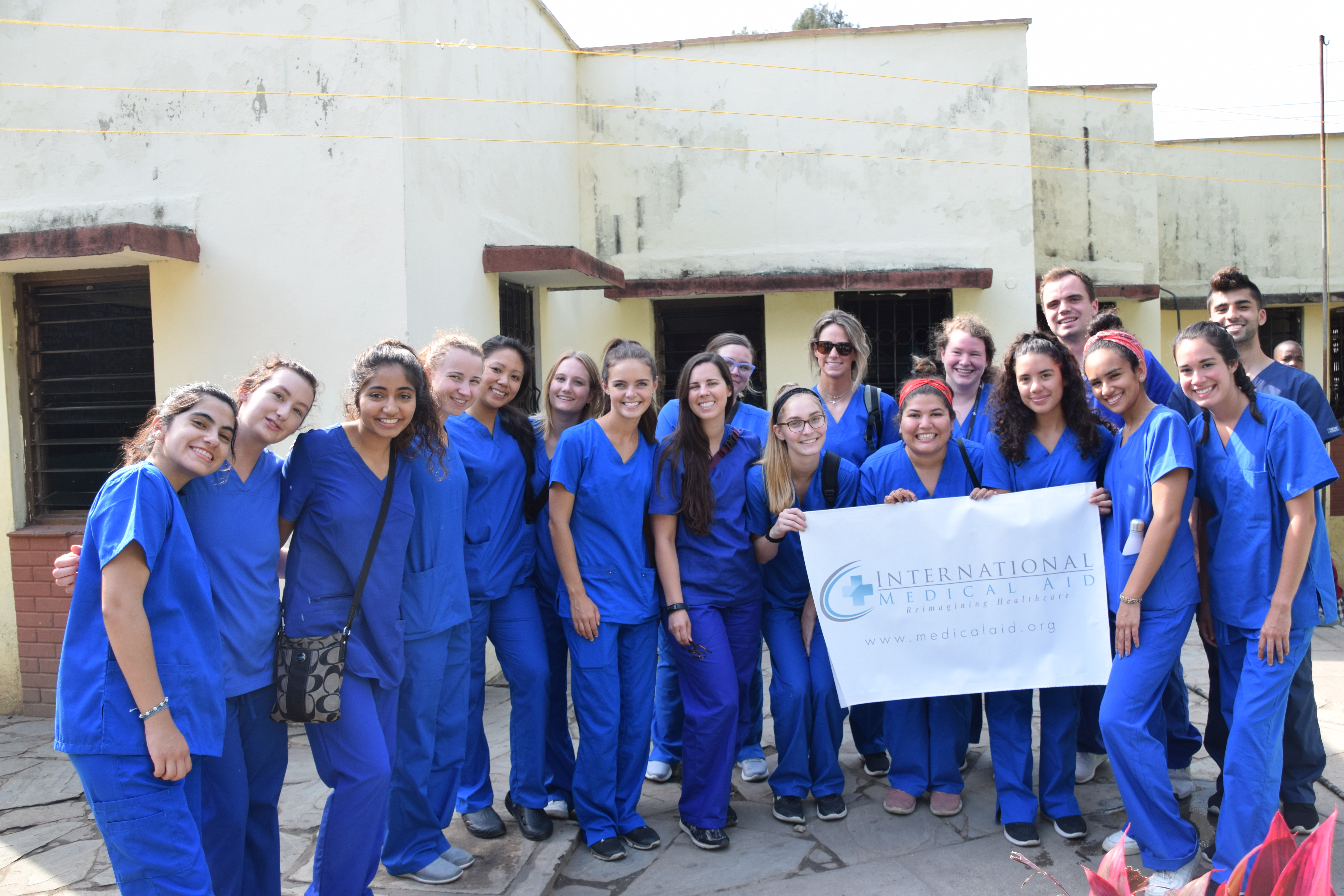Part 1: The Differences Between MDs and DOs
If you want to become a medical doctor, there are two different routes you can take. You can become a Doctor of Medicine (MD) or a Doctor of Osteopathic Medicine (DO). Both will crown you with a medical degree, allowing you to practice medicine wherever you are licensed.
The degrees have different components, though. MDs primarily focus on treating illness. The DO’s focus includes the mind, body and spirit, and how these separate elements might be affecting their patient’s health. Both degree programs are excellent. To read more about their differences, check out this blog.
It’s okay if you haven’t decided what kind of doctor you want to be. It’s not always an easy decision to make. While you decide, it’s a good idea to get acquainted with the different applications. If you apply to any type of medical program, you’ll have two applications. These are known as your primary and secondary applications.
Part 2: Primary and Secondary Applications
For a Doctor of Medicine (MD) program, you’ll submit your primary application via the American Medical College Application Service (AMCAS).
For a Doctor of Osteopathic Medicine (DO) program, you’ll submit your primary application via the American Association of Colleges of Osteopathic Medicine Application Service (AACOMAS).
For both kinds of programs, your secondary application will be submitted directly to the program to which you’re applying. For more information on secondary applications, check out our Admissions Consulting blog. We offer definitive guides on how to get into different medical programs. We cover both MD and DO programs, and we explain every part of the secondary application process, as it is unique to each school.
Here are the schools we’ve covered so far:
If one or more of the programs you want to apply to aren’t listed here, bookmark our blog! We post new programs to our blog all the time. And don’t be afraid to check out schools you didn’t know were out there. You’ll want to apply to lots of medical programs to up your chances of getting in.
Part 3: AMCAS vs. AACOMAS
DO and MD programs don’t work that differently, but the primary applications do. While some elements are part of both application services, they’re inputted differently. In this section of the article, we’re going to break down the differences between AMCAS and AACOMAS. This should help you, especially if you’re planning to apply to both MD and DO programs (which is totally OK to do!).
Who are the applications for?
AMCAS is only for first-year applicants. If you’re already in medical school and need to transfer programs, you’ll need to contact the program you’re transferring to directly. If you were denied medical school acceptance your first year, you can still use AMCAS to apply for your second attempt.
AACOMAS makes no specifications for who can apply. If you’re transferring programs, you can use the AACOMAS system. Be sure to include the medical school you’ve been attending, as well as the coursework you’ve already completed in the appropriate sections.
Deadlines
AMCAS deadlines for the 2025 cycle: Applications open May 1, 2024, with submission starting May 30, 2024. Deadlines vary by school, typically ranging from October 1, 2024, to December 1, 2024, all due by 11:59 p.m. Eastern Time (ET).
AACOMAS deadlines for the 2025 cycle (sourced from aacom.org): Applications open May 1, 2024, with submission starting May 14, 2024. Deadlines vary by school, typically from October 1, 2024, to March 15, 2025, all due by 11:59 p.m. ET.
Entering Your Coursework
AMCAS requires you to enter at least 10 courses (no longer as strict) for each college you’ve attended. The only exception to this is if you took less than 10 courses at the university. In that case, simply list all the courses you took. You almost must list your courses in chronological order. Your application will be returned if you fail to do this.
AACOMAS requires you to list every college you’ve attended, in chronological order, whether or not it relates to medical school. If you took dual-credit courses, summer courses or community college courses, list those in addition to the college where you’ve earned / are earning your bachelor’s degree. Leave no stone unturned when detailing the coursework you’ve completed.
International Colleges
International students can use AMCAS and AACOMAS to submit applications to international schools. But neither AMCAS nor AACOMAS accepts transcripts from colleges outside of the United States. Check with the individual programs to see where to send your transcripts, if they work with AMCAS or AACOMAS. Some schools use an entirely different process.
Transcripts
You’ll need to submit your transcripts with your Primary Application. But you cannot send them yourself. Both application services require that your transcript be sent to them directly from your university. AACOMAS requires that transcripts must be sent directly from an official university source (not necessarily the Registrar). Remember that neither application services accept international transcripts.
AMCAS Types of Courses on Transcripts
Here is a list of the codes you’ll see in the transcript section of your AMCAS application.
- AU – Audited courses
- CC – Courses that you are currently taking or that you expect to take
- DG – Multiterm courses (you didn’t finish the course the first semester you took it, so you retake it to finish it another semester)
- EX – Exempt courses
- NR – Courses with no recorded grade because the school made a mistake
- W – Courses you withdrew from or dropped
How Your GPA is Recorded
Institutions have different methods of recording GPAs. For this reason, both AMCAS and AACOMAS convert grades into one, uniform system for all students. So, when you type in your grades and coursework, don’t be scared if your grades or GPA look unfamiliar to you. The system is not changing your grades. They’re just being read differently.
What to Enter for Your Courses: AMCAS
The following must be listed / included:
- College-level courses completed in high school (regardless of credit)
- Any attempted courses
- Colleges where you registered, even if you didn’t take any courses
- Courses that didn’t count toward a degree
- Extension program courses
- Correspondence and home study programs
- Military education
- Overseas schools
The information provided in the AACOMAS section below is also accurate for AMCAS.
What to Enter for Your Courses: AACOMAS
For AACOMAS, begin with the high school from which you graduated. There is no need to send your high school transcripts or to list the courses you took. Simply state the name of the high school listed on your diploma or GED. If you were home schooled, this will be an option.
List all community college or university-level courses you have taken. Even if you only attended a college for one semester, list the college and the courses you took.
- For narrative transcripts, list your courses as pass/fail.
- For semester, trimester and quarter credits (3.0, 4.0, 5.0 numbers), type in them as listed.
- For unit credits, each unit is equal to four credit hours.
- For test credits, you may list anything that’s included in your transcript. This includes (but is not limited to) Advanced Placement, International Baccalaureate, CLEP, DANTE, Regents and any courses you “tested out of”.
- For advanced placement courses, only list the course as AP if your transcript states that it is. Also, list College Board Advanced Placement Exams.
- For honors courses, list these if they are clearly stated on your transcript.
- Only list a course as repeated if you took it twice at the same institution.
If all of this information is overwhelming to you, you’ll be relieved to know that you don’t have to do it yourself. AACOMAS offers a unique service to applicants: Professional Transcript Entry Service (PTE). The cost of this service depends on how many transcripts you have.
- 1-3 transcripts: $69
- 4-6 transcripts: $95
- 7+ transcripts: $145
Personal Statement
- AMCAS personal statement limit is now 5,300 characters (including spaces and punctuation) for MD applicants, but if applying to MD-PhD programs, the limit is 3,600 characters for the MD-PhD essay.
- AACOMAS personal statement limit is 5,300 characters (including spaces and punctuation) for all applicants (sourced from aacom.org).
- Both limits include spaces and punctuation.
In AMCAS, this section is called Personal Comments Essay. In AACOMAS, it’s called your personal statement. These essays are very similar. You have 5,300 characters for each essay. Having characters instead of words means that your spaces and punctuation marks count, too. You can write your essay in advance and paste it into the text box, or you can write your essay in the text box. Either way, keep an eye on your word count so you can focus on what’s most important.
AMCAS asks you to write an essay that covers your personal background as it relates to medical school. AACOMAS asks for a similar essay. They want to know why you want to become a doctor of osteopathic medicine. They advise against talking about specialty feeds since interests change over time. Instead, they recommend discussing the osteopathic medical field in general.
Click here to read about an AMCAS applicant who wants to become an OB/GYN so that she can focus on a particular stage of care in her practice.
Click here to read about a young man who was inspired by his paralyzed mother’s doctor.
Submitting Your Application
Once every part of your application has been filled out, it’s time to review it and then submit it. Reviewing your applications happens the same way you would proofread an essay for typos or a resume before submitting it to a potential employer. If there are any issues, AMCAS and AACOMAS will alert you and allow you to make changes, provided that you do so before the deadlines.
- AMCAS statuses (simplified): In Progress, Submitted, Under Review, Verified, Complete, Withdrawn.
- AACOMAS statuses (simplified): In Progress, Received, Verified, Complete, Undelivered.
Keep an eye on your application. If you have any questions, reach out directly to AMCAS or AACOMAS for help.
Before you begin either application, check out our definitive guides.
International Medical Aid
Here at International Medical Aid, our #1 priority is you. Everything we do here is designed to help you succeed. That’s why we work with the best in the field. And that’s why our students have been accepted into universities like Yale, Perelman and UCLA.
If you need help with your application, we’re here for you. We can review your primary and secondary applications, go over your personal statements and go through a mock interview with you.
If you’re still deciding whether you want to be a doctor, considering going on a trip with us. We take students to underserved communities in, South America and East Africa, where they have the opportunity to provide medical care. These experiences will not only help you understand the medical field as a whole, but you will have unforgettable experiences that last a lifetime (and go great in essays!).
Don’t hesitate to reach out to us if you have questions or need assistance. International Medical Aid is rooting for you!





